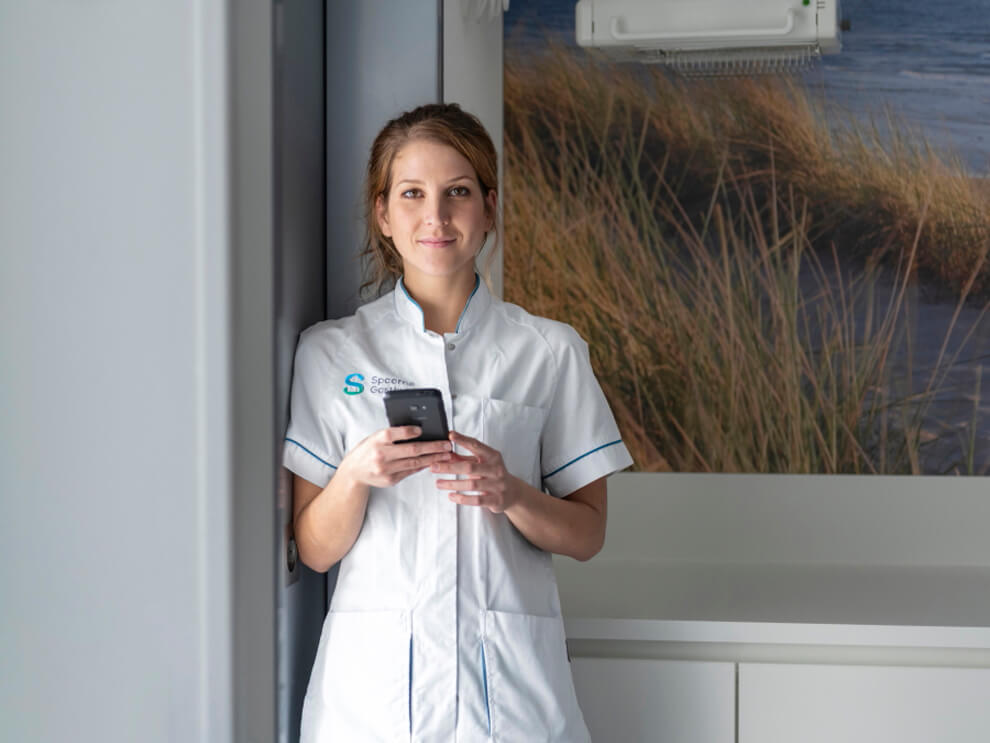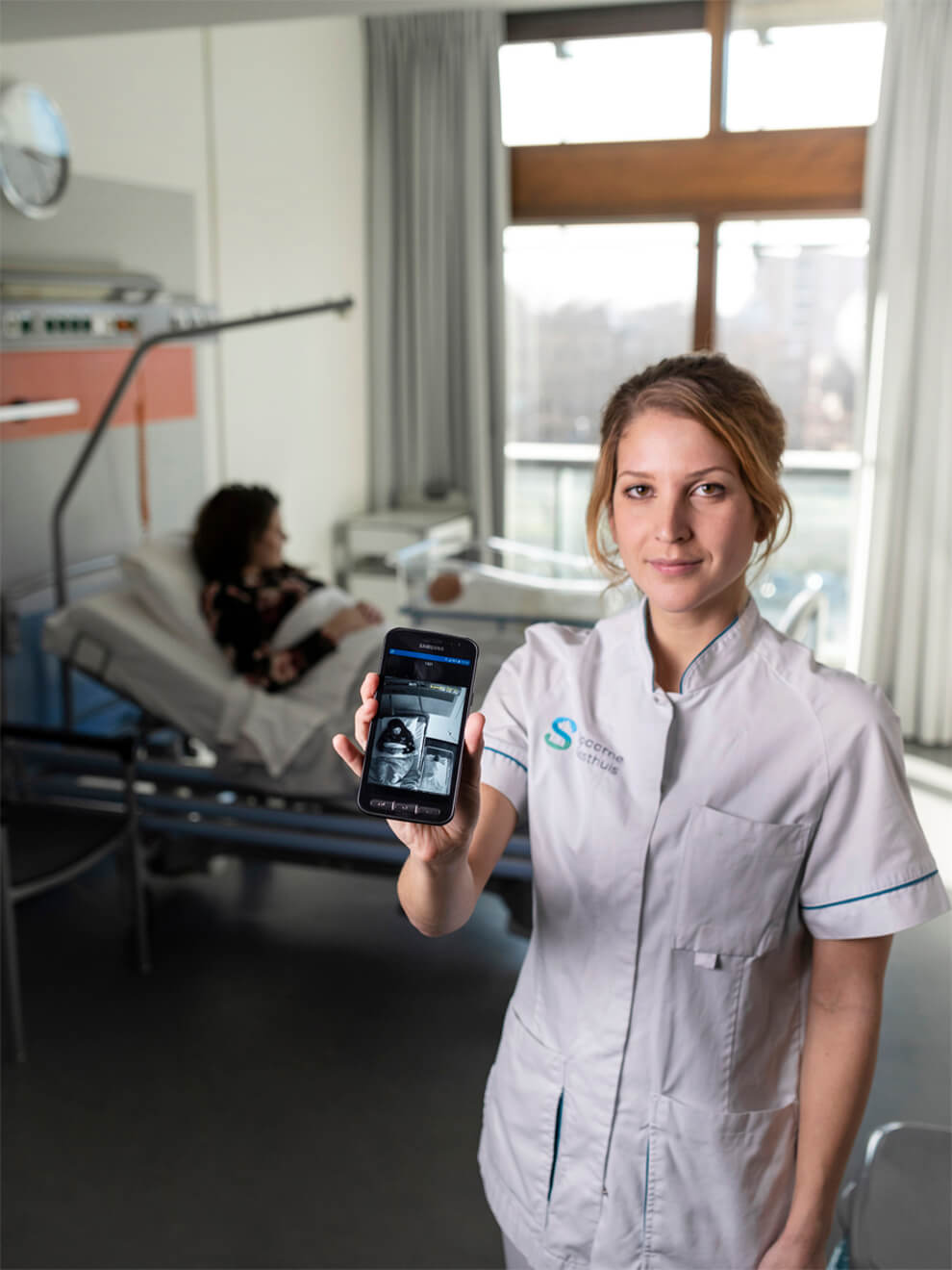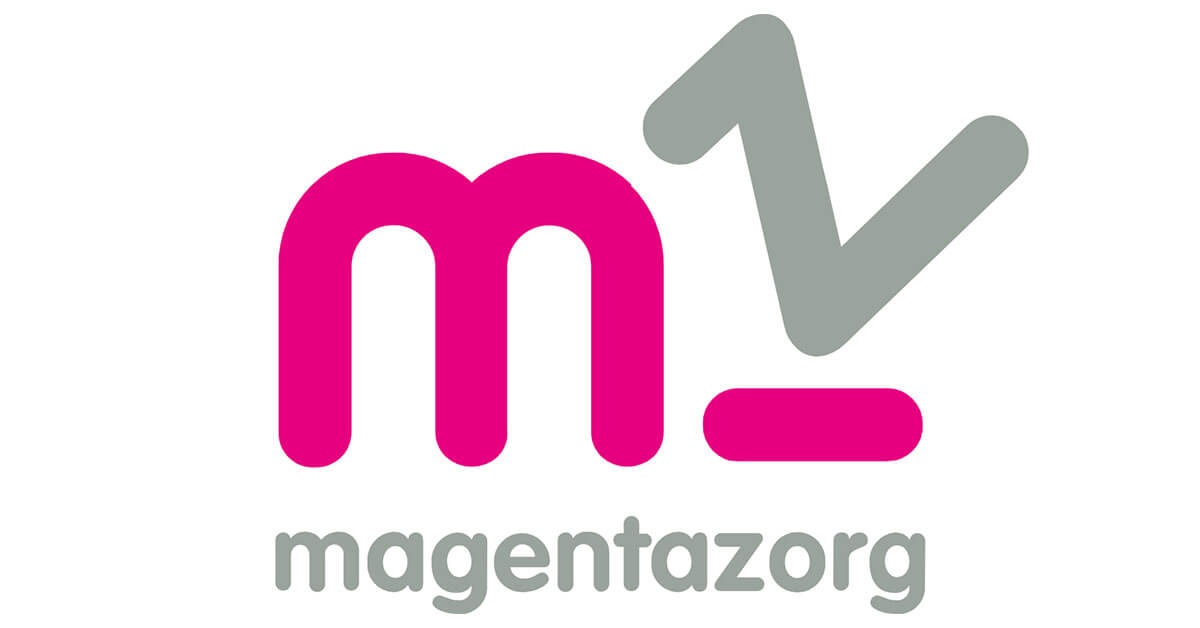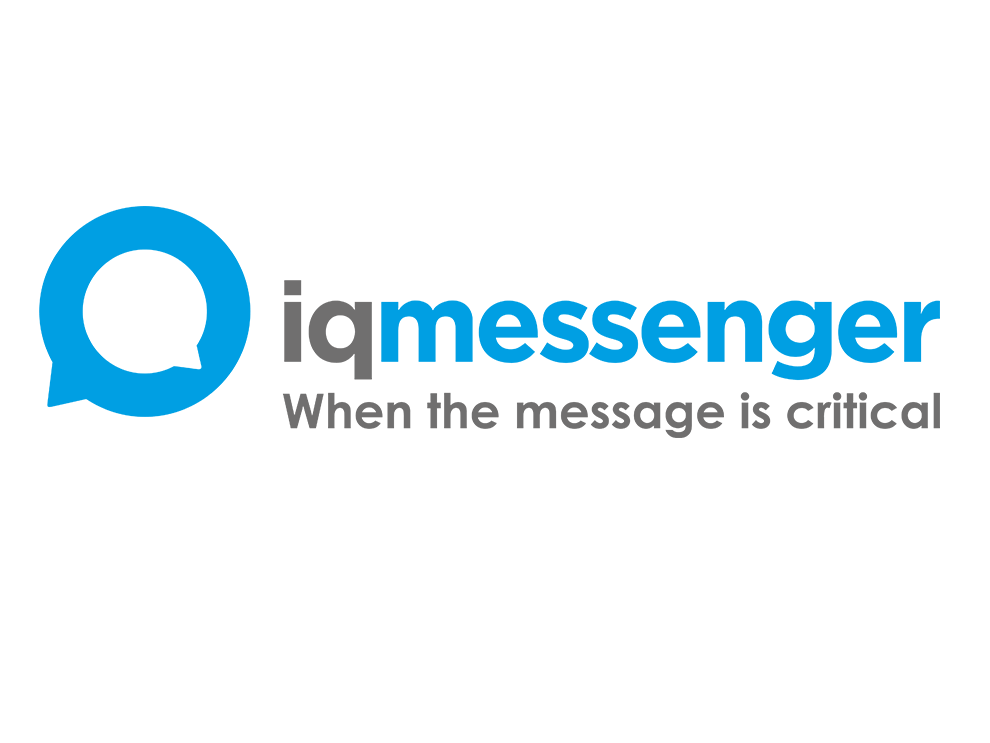Personal alarms in healthcare
IQ Messenger
Products and services
Alarms in healthcareIndustrie
Elderly care, HospitalLocation
NetherlandsSources and Downloads

Technical features
- The SmartApp application is one application for receiving alarms and triggering personal alarms in emergency situations;
- The SmartApp is suitable for Android and iOS;
- SmartApp Android communicates directly with IQM Server and SmartApp without intervention of the Google cloud;
- SmartApp licenses are based on concurrent users;
- SAML V.2 interface will be released soon;
- Extended employee login and authentication method. Step one personal login, step two scanning QR code or NFC tag and step three location BLE beacon;
- Software only platform, available in High Availability Cluster;
- Monitor functionality of all integrated systems. For instance notifications to offline employees, insufficiently charged smartphone battery, network connection, network failure etc.

Triggering alarms manually with alarm button
- Personal alarms can be triggered manually with a smartphone built-in button, recognizable by our SmartApp, on the following Android devices:
- Samsung X Cover 3 and 4
- Sonim XP7
- Caterpillar S41
- Point Mobile 54
- Spectralink Versity 4
- Myco 3 and Zebra TC52-HC/TC72;
- Alarm differentiation by short press, long press and multiple clicks is possible on various devices;
- Personal alarms can be triggered manually with the Android and iOS devices by using a V.ALRT watch / button which communicates with SmartApp (Bluetooth);

Alarm messages with location display
- Alarm messages can be enriched with a location by interfacing a localization system;
- Localization based on GPS, employees who receive an alarm follow-up notification in with a GPS coordinate;
- Localization based on WiFi location technology Cisco, Aruba / HP and Huawei;
- Localization based on Bluetooth Low Energy and any BLE beacon device;

Any-to–any alarm management without vendor lock-in
- Alarm follow-up guarantee with escalation possibilities to other devices and minimum number of employees acceptance option;
- Employees will receive a warning when the device is not online and no critical calls can be received;
- Extensive reporting possibilities of all triggered and sent alarms can be downloaded via the Reports web application as standard and can be exported via e-mail, PDF or .CSV.;
- Alarms and notifications can be send to other employees who are using the SmartApp;
- SmartApp alarms with employee name, location and other relevant information;
- SmartApp alarms can be enriched with a RTSP link with camera image and the location of the employee;
- SmartApp alarms with call-back functionality for alarm successor to listen;
- Alarm messages can be sent to more than 120 other systems with OTNS. For instance:
- DECT handsets
- VoWiFi devices
- Internal control rooms
- External control rooms
- Automatic calls
- E-mail message
- SMS;
- Alarm messages can be sent to OTNS Real Time Console and Graphical Floor plan webapplication to create your own monitoring center / control room.

Automatic alarm triggers with personal security features
- Personal alarms can be triggered automatically on Android phones when the employee enters an unsupervised area;
- Automatic triggers are based on “no movement” and “unsupervised area”;
- Personal security features are:
- ‘No movement’ after x seconds no motion
- Suspended loneworker for temporarily pause personal security
- Enter unsupervised area and check every x minutes if the employee is still present with “yes I’m here” confirmation;
- As soon as personal security is enabled it can be visually displayed on the Graphical Floorplan web application of OTNS to other employees.
- When personal security is enabled, it can be displayed with notifications to other employees on a handset or smartphone;
- Personal Security on the SmartApp can be activated manually by employees via the soft button; Personal Security on the SmartApp can be activated automatically by scanning an NFC tag or QR code;

Employees personal login and alarm assignment
- The SmartApp log in is based on function or preferably with a personal account;
- Alarm management and assignment can be done statically and only on admin level with the OTNS Event Flow manager administrators application;
- Alarm assignment for on user level with QR scan, NFC or Graphical Event Assignment web application;
- Using the Graphical Event Assignment web application for easy alarm assignment and visibility of off- and online employees;
- Employees can automatically assign alarms by scanning QR codes or NFC tags;
- Example: Nurses at a clinic use their smartphones to receive alarms from multiple buildings and trigger personal security alarms in several buildings. Before entering them, the nurse scans the QR code or NFC sticker to activate personal security alarms functionality for that building and will be able to receive alarms from nurses who are triggering personal security alarms in this building. If they leave the building, another QR code /NFC tag will be scanned to log out.
Get started with IQ Messenger.
Optimize alarm management
Keep me informed
Sign up to get the latest announcements and updates delivered to your email
Sign me up




